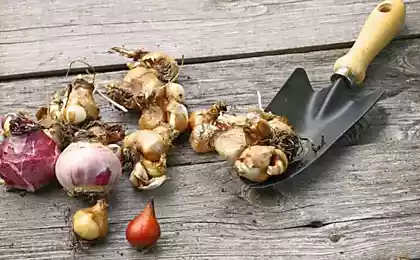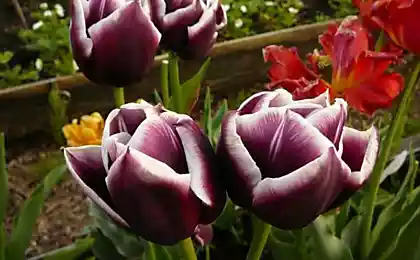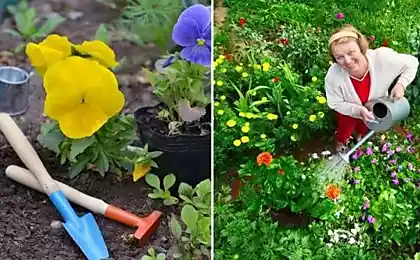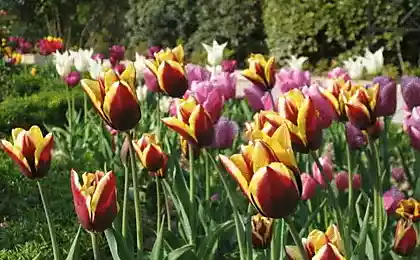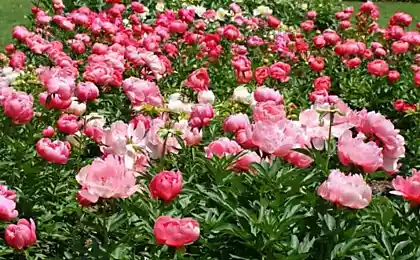196
What to do with tulips after lush flowering, prepare bulbs for next spring
After a long and gray winter, the flowering of tulips is the first bright event of spring for gardeners. Everyone is waiting for them to open up and please the eye with bright colors. However, not all gardeners know what to do with tulips after flowering. It turns out that these flowers require special care.

And today's edition. "Site" It tells you how to deal with faded tulips and save them until next spring.
What to do with tulips after flowering The first logical question is: should the tulips be cut? If you want to preserve the size of the buds, then you need to cut the tulips after each flowering. So the future bulb will mature better and retain all the necessary nutrients.
It is important to cut not only the bud, but also the entire stem directly near the bulb. It is important to consider a few nuances. First, you need to wait until the petals become dry and I will easily separate from the stem. Secondly, do not forget to mark the presence of the bulb in the soil in advance so that it is easier to dig it out later.
Also remember that the pruning tool must be disinfected. You can wipe it with an antiseptic or use permanganate. Then wipe dry, and only then prune.
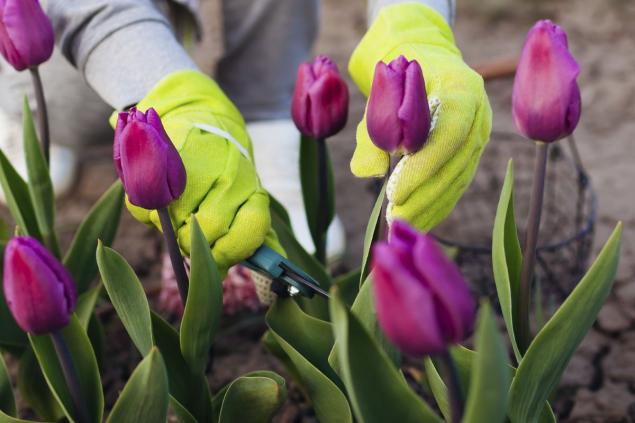
The life of tulips after flowering It is important to allow the bulb to complete the full cycle of development. Continue to water the plants, but moderately. The last time you water, you can put in a phosphorus feed. You can also apply mineral fertilizers, which contain manganese, zinc and boron. But do not fertilize with manure, so the bulbs can rot. It is also better to refrain from fertilizers with chlorine.
If the leaves of the tulips turn yellow, but do not wither, do not rush to cut. Let the process of wilting end naturally. This is important in order to keep the bulb strong until next spring.

Experienced gardeners recommend digging out tulips annually if you want to preserve the variety. This applies to green, fringed and parrot varieties. Otherwise, the features will be lost.
But simple early and late varieties of tulips can be dug only once every 3 or even once every 6 years. These are the following varieties: Kaufman, Foster, Greig, Triumph and Darwin hybrids.
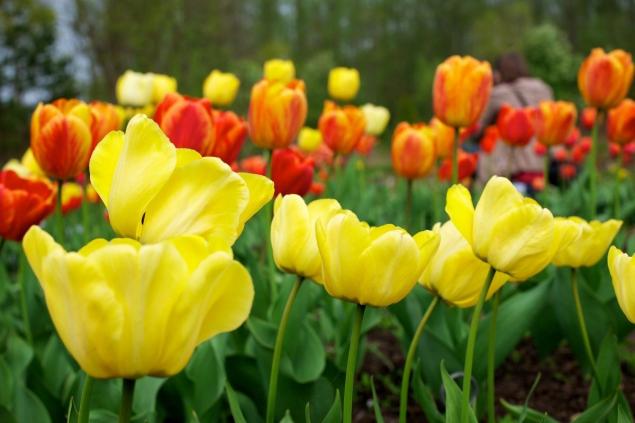
Some gardeners dig up tulips immediately after flowering, but this is not exactly the right approach. If you dig them out right away, it will cause the bulb to grind. Because of this, next year they may bloom less, the flowers will not be as large. It is best to start cleaning the tulips after the leaves dry completely. First, you need to dig out the early varieties, and then, as you wither, the middle and late ones.
Most often, tulip harvesting falls in the second half of June or early July. You need to dig very carefully so as not to damage the children. It is best to do this in sunny weather. Each bulb should be examined and checked for mold and rot. The damaged tubers must be thrown away.
Healthy bulbs should be treated with a solution of permanganate and thoroughly dried in the open air. Just be sure to protect from direct sunlight. The bulbs are now ready for storage.
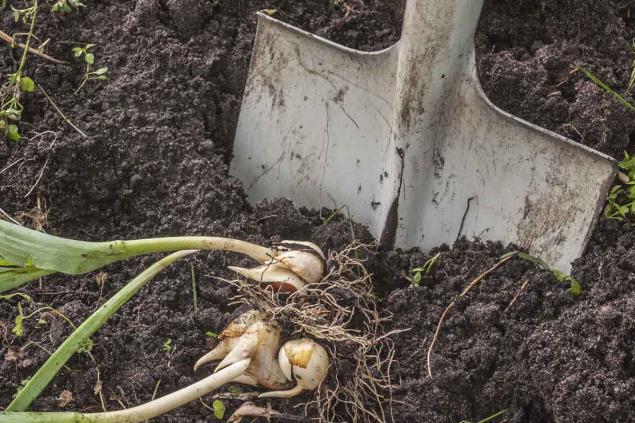
Processed and dried bulbs should be sent to a cool dry room with good ventilation. During the month, the storage temperature should be 23-25 degrees. Then you can gradually lower. The optimal temperature until September is 15-17 degrees. Before landing, you can start raising the temperature again. With proper storage, the bulbs will feel great until autumn planting.
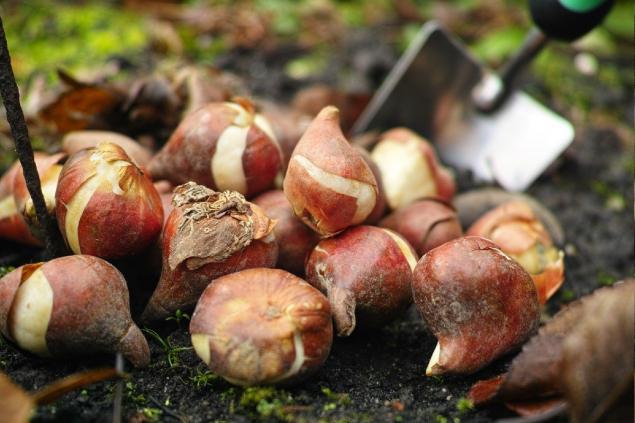
We hope we helped you figure out the intricacies of what to do with tulips after flowering. Now you can make no mistakes and your tulips will blossom next spring. You can boast of your varieties of flowers in the comments, we will be happy to see.

And today's edition. "Site" It tells you how to deal with faded tulips and save them until next spring.
What to do with tulips after flowering The first logical question is: should the tulips be cut? If you want to preserve the size of the buds, then you need to cut the tulips after each flowering. So the future bulb will mature better and retain all the necessary nutrients.
It is important to cut not only the bud, but also the entire stem directly near the bulb. It is important to consider a few nuances. First, you need to wait until the petals become dry and I will easily separate from the stem. Secondly, do not forget to mark the presence of the bulb in the soil in advance so that it is easier to dig it out later.
Also remember that the pruning tool must be disinfected. You can wipe it with an antiseptic or use permanganate. Then wipe dry, and only then prune.

The life of tulips after flowering It is important to allow the bulb to complete the full cycle of development. Continue to water the plants, but moderately. The last time you water, you can put in a phosphorus feed. You can also apply mineral fertilizers, which contain manganese, zinc and boron. But do not fertilize with manure, so the bulbs can rot. It is also better to refrain from fertilizers with chlorine.
If the leaves of the tulips turn yellow, but do not wither, do not rush to cut. Let the process of wilting end naturally. This is important in order to keep the bulb strong until next spring.

Experienced gardeners recommend digging out tulips annually if you want to preserve the variety. This applies to green, fringed and parrot varieties. Otherwise, the features will be lost.
But simple early and late varieties of tulips can be dug only once every 3 or even once every 6 years. These are the following varieties: Kaufman, Foster, Greig, Triumph and Darwin hybrids.

Some gardeners dig up tulips immediately after flowering, but this is not exactly the right approach. If you dig them out right away, it will cause the bulb to grind. Because of this, next year they may bloom less, the flowers will not be as large. It is best to start cleaning the tulips after the leaves dry completely. First, you need to dig out the early varieties, and then, as you wither, the middle and late ones.
Most often, tulip harvesting falls in the second half of June or early July. You need to dig very carefully so as not to damage the children. It is best to do this in sunny weather. Each bulb should be examined and checked for mold and rot. The damaged tubers must be thrown away.
Healthy bulbs should be treated with a solution of permanganate and thoroughly dried in the open air. Just be sure to protect from direct sunlight. The bulbs are now ready for storage.

Processed and dried bulbs should be sent to a cool dry room with good ventilation. During the month, the storage temperature should be 23-25 degrees. Then you can gradually lower. The optimal temperature until September is 15-17 degrees. Before landing, you can start raising the temperature again. With proper storage, the bulbs will feel great until autumn planting.

We hope we helped you figure out the intricacies of what to do with tulips after flowering. Now you can make no mistakes and your tulips will blossom next spring. You can boast of your varieties of flowers in the comments, we will be happy to see.
Prophecies of St. Xenia of St. Petersburg, which make you look into your soul and think about life
Why literate gardeners sow at least a little buckwheat on their beds
